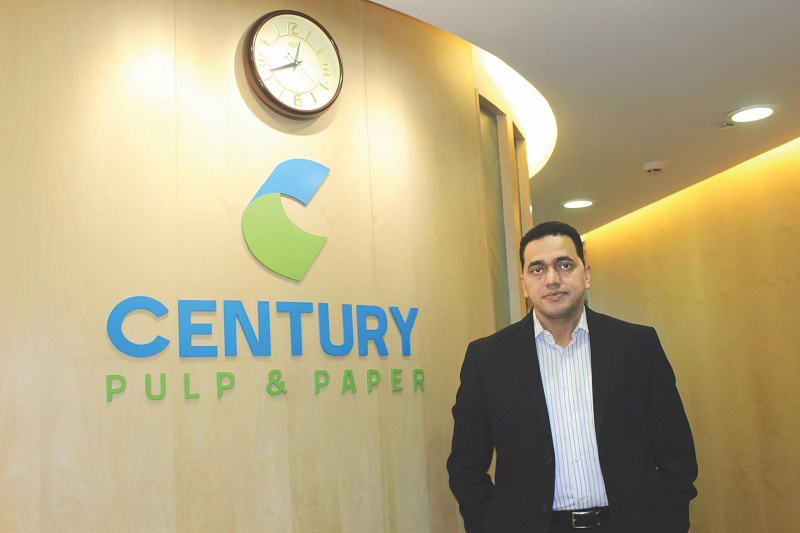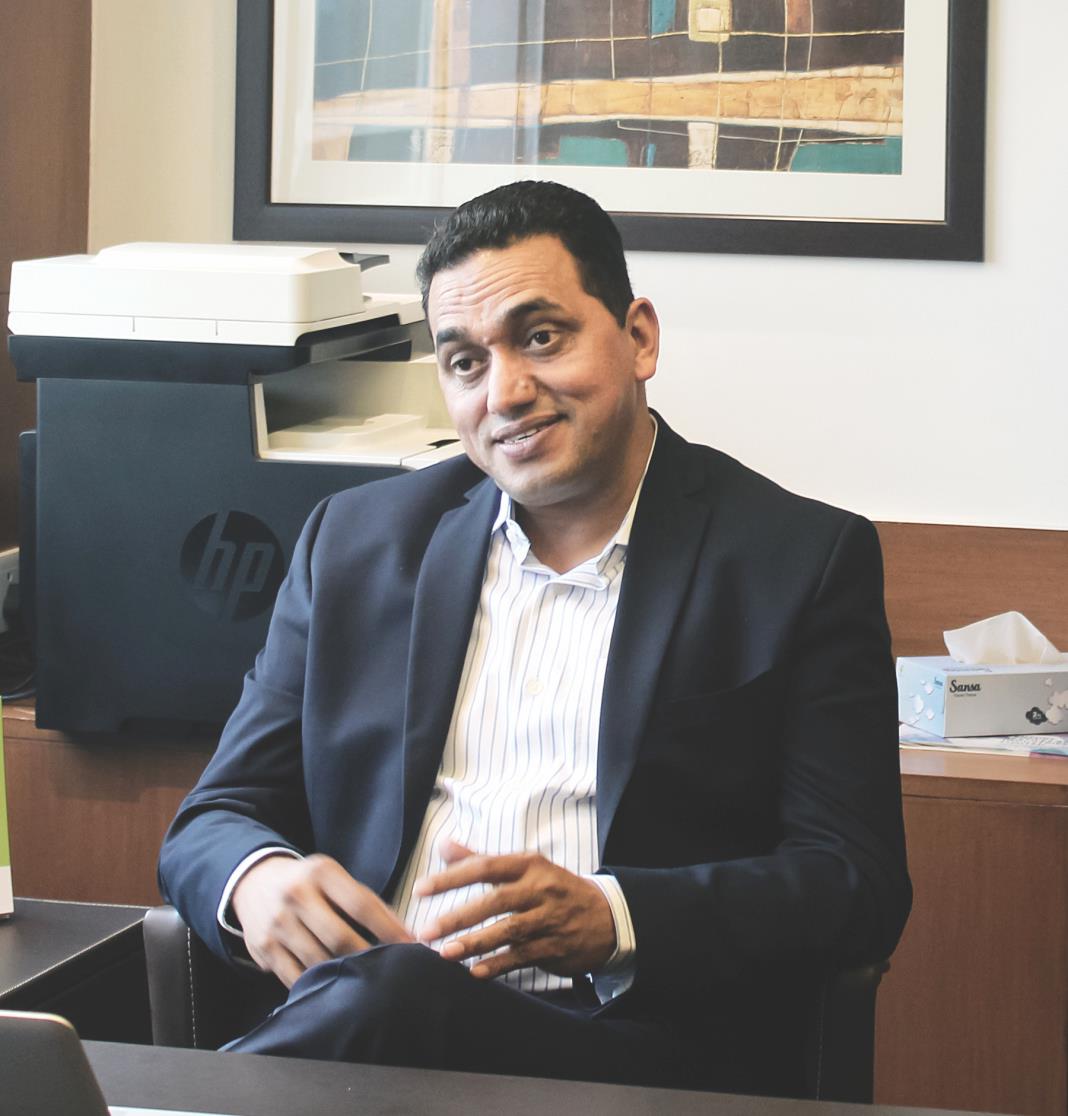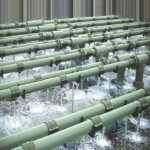Century’s gloomy financial outlook during years 2008-2012 was an outcome of several lapses in operations and administration; a new team harnessed for the purpose located blockages and cleared the way for new performance standards which Century seems to be scaling now.

efficiency drive at the company to catapult it to the top league again.
Century is probably among few mills in the country which uses all types of raw material, viz. wood, bagasse, and recycled paper to produce all variants of paper under one roof, i.e. W&P, tissue and high value multilayered board. In W&P, it’s been utilizing its 100 percent capacity for long in W&P to manufacture and supply an excellent quality paper in the market. With a cutting-edge and the best technology for tissue manufacturing, over 60 percent of its tissue production is exported to a number countries in the world.
Century though witnessed some tough time financially around 2012-13 precipitated by instability in the overall management of the company. Consequently, not only did Century suffered financial repercussions in the form of some cash-loss reported in 2012-13, it became wary of losing its leadership position in the market. However, practicing acute financial, operational, and human resources management measure, it reclaimed its financial and credibility vantage points in the market.
Paper Mart recently had a detailed interaction with Mr. Jaiprakash Narain, Chief Operating officer, Century Pulp & Paper to know more about financial resurgence of the company, major efficiency drive undergone at various fronts, and more…Excerpts:
The year 2015-16 was particularly an immensely good year for Century, wherein we grew by 16.5 percent in volumes and 63.5 percent in EBITDA. In 2015-16, EBITDA touched Rs. 290 crore which we are expecting to take further to Rs. 340 crore in 2016-17.
To start with, share with us certain crucial developments over last few years at Century.
The period 2008-2012 was rather difficult for Century – a sort of bad patch, actuated by the frequent changes in the management. Operations were not stabilized and the company’s financial scenario was a bit murkier – we were even in some cash-loss situation in 2012-13. Moreover, there were some compliance issues too, impeding the progressive steps by the company then. A completely new team came on board in 2012 to work out a turnaround for the company – though a non-paper team, but having expertise acquired from working in diverse industrial backgrounds.
This team was able to bring about improvements in both the top-line and the bottom-line of the company. The scenario started to change for good from 2013-14 recording a profit of Rs. 150 crore, and the success story continued in ensuing years 2014-15 and 2015-16 with significant recorded profits. The year 2015-16 was particularly an immensely good year for Century, wherein we grew by 16.5 percent in volumes and 63.5 percent in EBITDA. In 2015-16, EBITDA touched Rs. 290 crore which we are expecting to take further to Rs. 340 crore in 2016-17.
As far as top-line is concerned, we have almost doubled it from 2012 level – from Rs. 1250 crore in 2012 to Rs. 2200 crore in 2016. The last three and a half years have been significantly prolific for Century in all aspects of business, from manufacturing efficiency and cost reduction to product development and services to customers. For instance, specifically on service side, we could achieve manifold increase in sales volume by virtue of our superior services – from 2500 tonne/month of packaging board in 2012 to 12500 tonne/month in 2015. We have bounced back to our deserved position of glory, respect and trust.
In a survey carried out last year to gauge the engagement and motivation level among workers, we found out a pleasing 69 percent engagement of total manpower in various operations wherein 95 percent of the workforce participated in the survey.
Quite interesting! Being a part of this turnaround, or better called a paradigm shift, would you please share with us some major challenges and bottlenecks you faced and which were necessary to be done away with?
When an organization derails or destabilizes owing to various seen or unseen factors, many consequential things further deepens the crisis and the instability gets more accentuated, and thereby a vicious circle. It is therefore of utmost significance to locate such factors and consequences to take corrective steps. For instance, in the state of instability, the cost of manufacturing more often goes up and which was the case for us as well. We did not remain very competitive in the market and whatever sale we were doing, were doing at loss; and, of course, the loss was further aggravating the pain. This had to be remedied fast.
Also, when there is an instable management, an overall complacency creeps in administration, and things start going out of hand with reference to overall management of human resources in the company, and which in turn results into lapses in every segments of operations. This again was great blockage in the way of Century’s progress.
One of the repercussions of instability is flight of good work force apprehending that something bad would happen as the company is not in a healthy position. Besides, a company in such a situation also loses its credibility and trust factor in the market because of inconsistent supply. This further hampers the business and you are not able to win long-term contracts promising healthy returns; you just become an ad-hoc supplier, supplying on and off, resorted to only when others are not able to supply when needed.
The challenges I enumerated though seemingly independent are part of the same complex whole, which we tried to address immediately and have gained considerable inroads into. To put on record, not only did we succeed in bringing down the manufacturing cost significantly since 2012, but have made encouraging gains on human resources front in terms of the level of engagement and motivation. In a survey carried out last year to gauge the engagement and motivation level among workers, we found out a pleasing 69 percent engagement of total manpower in various operations wherein 95 percent of the workforce participated in the survey.
In terms of services and supplies, we were able to establish the rapport with market and won back the trust of our customers. We are now back-on-track with more gusto and our putting-things-in-order can be reflected by our financial successes which I told you earlier. The good news is that we are now more often with surplus orders – if the month is closing today, we already have orders for next 15 days or one month. This is yet another indicator of the market’s trust in Century Pulp and Paper.
As is always the case, fiber remains a seemingly everlasting challenge for the pulp and paper manufacturing industry. We would like to know overall raw material scenario at Century as of now or may be over four five years from now. Also, tell us the raw material mix you use.
Century is probably the only mill in the country which uses all types of raw material, viz. wood, bagasse, and recycled paper. Also, we are the only mill to produce all variants of paper under one roof – we manufacture W&P, tissue and high value multilayered board. We also make rayon grade pulp which is supplied to textile industry.
Moreover, as far as unhindered supply of fiber is concerned, social farm forestry seems only sustainable method to ensure that. We will have to have natural cycle of resources restored to accrue continuous benefits of utilizing natural resources.
If we talk about the raw material availability in the country, this is a challenge across the industry including Century. However, we have a slight edge over others owing to our strategic terai location in Uttarakhand, where farm forestry is taken seriously and farmers are able to attach an economic value to it. These farmers are growing both eucalyptus and poplar, and are reaping adequate economic benefits without disturbing their regular cropping pattern. These trees have a maturity cycle of 4.5-5 years and the farms are located within 150-200 km radius – our wood-based requirements are adequately met from such supplies.
Our raw material requirement break-up is 33 percent wood-based, 33 percent bagasse, and remaining 33 percent recycled paper. This kind of raw material mix is rarely used by any other mill. In recycled paper, some we are procuring domestically and the rest is being imported. As of now, we are able to balance the three, but I can’t say that about future. Especially, bagasse usage might witness shrinkage because of its unlikely availability in future as sugar mills might be using these themselves for generating power in their captive units as the govt. has announced certain incentives to such power generation by sugar mills.
Moreover, as far as unhindered supply of fiber is concerned, social farm forestry seems only sustainable method to ensure that. We will have to have natural cycle of resources restored to accrue continuous benefits of utilizing natural resources. For example, Century has made it a constant practice to plant, preserve and nurture as many saplings as trees are cut in an area under a close cooperation with farmers. We are providing all technical helps to framers in addition to providing them with high technology hybrid saplings with guaranteed growth and survivability.
We also have a nursery where we are producing around 5 lac saplings a year, soon to be extended to 10 lac saplings a year. We are also tying up with local nurseries to distribute among farmers saplings at subsidized rate to ensure no-delay in planting back the tree after felling one. The ultimate agenda is to become fiber positive and be sustainable in whatever we are doing.
Is there possibility of any change in your raw material mix in future?
Yes, it may change. As I said that bagasse may disappear from our mix as the govt. has announced certain incentives to sugar mills if they begin some initiative for power generations at their plants. Most certainly, in such scenario, sugar mills would think of utilizing bagasse in their own mills for power generation purposes. Then, quite obviously, the pressure on wood fiber would increase and we may have to look for other possible sources of fiber, viz. residual fiber like waste of filling industry or veneer chips. We would need to switch on those and try to extract fiber from the waste of filling industry.
As part of the said turnaround at Century in over last 3-4 years, what kind of steps did you take to bring down the overall operational cost?
We worked out a multi-pronged strategy to improve efficiencies on all fronts, especially in manufacturing where plant utilization is an important factor. We have been able to move up the plant utilization to 89 percent from 73 percent in the last three years. Once the efficiency moved up, an overall reduction in costs happened. Moreover, we have also gone for reduced manpower by around 24-25 percent.
As I said that bagasse may disappear from our mix as the govt. has announced certain incentives to sugar mills if they begin some initiative for power generations at their plants. Most certainly, in such scenario, sugar mills would think of utilizing bagasse in their own mills…
The efficiency related utilities and consumption has also been improved upon considerably, for instance, the power consumption has been slashed down by 80 kwh/tonne of paper, which is huge. We have also been working on lowering down steam cost by adopting ‘recovery within process’ and utilizing more of non-coal steam. The non-coal steam constitutes now 38-40 percent, a visible improvement from earlier 30 percent. This evidently means the reduction in coal consumption thereby reducing overall cost; non-coal steam is almost free of cost. In nutshell, we have improved our recovery operations and practices very well.
If you observe the overall manufacturing efficiency today by virtue of all other efficiency improvements stated earlier, we are now able to churn out more in less. In addition, we have renegotiated all our tenders and contracts and reduced the chemical costs by 22 percent.

Do you wish to take this efficiency improvement drive further by investing more in processes and technologies?
Yes, of course! We have planned a capex of Rs. 80 crore this year to set up a new recovery evaporator which has got the latest technology with much better efficiency. ROI will take two years from the date of installation. However, once the evaporator is in place, we are certain to expect improvements in our bottom line. Moreover, we are carrying out a number of audits for different areas of operation to assess what more can be done and where is scope of further improvement.
Of late, compliance has become quite crucial issue for the pulp and paper industry. Given the location of Century, don’t you think you share even greater concern for the said issue?
Compliance to environmental regulations is continued challenge and a matter of concern for the entire pulp and paper industry. However, Century has invested considerably in addressing those regulatory concerns and probably is one of the few companies to have invested such a large sum. The company has gone for a complete upgradation of our ETP with all available and the most sophisticated technologies. It has invested a substantial Rs. 100 crore and are happily getting an annual return of Rs. 12 crore.
How do we do that may be an interesting tale! We have put a filtration press from Bellmer, Germany in ETP. This technology is able to finely separate the fiber which is contained in the effluent from the mill. We are using this fiber to produce grey back board. In this way, we have been able to recycle the fiber which otherwise was wasted alongside effluent. Secondly, we have a biomethantion plant to generate methane gas. To purify this methane gas, we have installed a purification plant worth Rs. 3.5 crore. This purified methane is 10 percent more efficient than LPG – 1 kg of purified methane equals 1.1 kg of LPG. We used LPG for tissue manufacturing; now we have cut down the LPG procurement to 30 percent, the remaining 70 percent requirement is fulfilled by the methane we are producing – saving Rs. 70-75 lac per month. And, we are saving 25-30 lac from the fiber recovered from effluent. In total, we are saving about Rs. 1 crore a month, amounting to Rs. 12 crore a year.
However, Century has invested considerably in addressing those regulatory concerns and probably is one of the few companies to have invested such a large sum. The company has gone for a complete upgradation of our ETP with all available and the most sophisticated technologies. It has invested a substantial Rs. 100 crore and are happily getting an annual return of Rs. 12 crore.
We also have proper technologies, required to strictly adhere to compliance, such as technology for aeration, MBBR technology, coagulation technology for color treatment, etc. After passing through these technologies, 40 percent of the treated water is sent back to the plant for further use. We have significantly reduced our water consumption to a level of 44 KL/tonne of paper.
The strength and hardness are the USP of our board. We have recently launched a board having bulk of 1.8 – meaning that if you were using 250 gsm board earlier, this new board will match the requirement in just 220
gsm because of more stiffness and high strength.
On our air side too, we are taking all possible efforts. All our boilers have got electrostatic precipitators to remove suspended dust particles from a gas or exhaust. A special gas, i.e. mercaptan is emitted when we cook wood. We have installed a non-condensable gas recovery system to condense mercaptan which is later burnt in limekilns. Whatever solid such as fly ash is generated is sold to cement industry. So Century has always been proactive on all the fronts of liquid, solid and gases as far as compliance to environmental regulations is concerned. We believe in doing socially responsible and environmentally sustainable business.
Coming to your product-mix, what are your expectations from packaging segment? Your comments on packaging board scenario with key drivers in focus. What is USP of Century’s board?
The board growth is propor-tional to the growth in pharma and FMCG industries. As per my opinion, the average growth of board will be in the range of 7-9 percent or higher. The GDP of India will also be a key driver to this segment. In aggregate, FMCG, food processing industry, consumer durables, on-the-go lifestyle, rising middle class, etc. will contribute cumulatively to the growth of packaging board.
Moreover, from consumption perspective also, India has a big scope of growth. India as of now consumes only 19 kg of paper and board per capita in comparison to Asia’s consumption of 37 kg and global average of 57 kg.
The strength and hardness are the USP of our board. We have recently launched a board having bulk of 1.8 – meaning that if you were using 250 gsm board earlier, this new board will match the requirement in just 220 gsm because of more stiffness and high strength. This USP will definitely keep us ahead for the time till others don’t invest in such technology.
W&P is commoditized kind of a product, whereas packaging board is still sort of customer-driven; companies comparatively have to walk an extra yard to ensure a stable demand from the market. What do you say?
Yeah, paper is still traditional and not putting a lot of pressure as packaging as far as customization of products is concerned. However, packaging board is hardcore FMCG kind of a thing as people need a faster delivery with a quality they require because of things such as no one wish to keep stocks in his warehouse, converters’ urgency to deliver fast because of the lack of space, demand of rapid delivery of products from e-commerce, etc.
Century is taking extra care of this ‘fast’ aspect. For bigger customers, we are assigning special account executives to take of their end-to-end delivery from receiving order, shipping fast deliveries to ensuring
delivery is as per customers’ expectations.
Conclusively, board sale is directly proportional to how fast you can deliver it to customers’ doorstep. Century is taking extra care of this ‘fast’ aspect. For bigger customers, we are assigning special account executives to take of their end-to-end delivery from receiving order, shipping fast deliveries to ensuring delivery is as per customers’ expectations.
For smaller customers, we are opening quick service centers near bigger markets, like the one we have at Bharuch which caters to both Gujarat as well as Mumbai market. It is ensured that order size from 0.5 tonne to 5 tonne (maximum) gets delivered within 72 hours at your doorstep. We have another such service center at Baddi catering up to Chandigarh market. We are planning our third and fourth centers at Delhi and Kolkata respectively. Once we have such a service center network fully operational, a stock up to 2000 tonnes can be maintained and customers won’t require holding any stock in their warehouses. At service centers, we have cutting and packing facilities to take care of immediate deliveries. Owing to such quick service centers, the flexibility and ease of doing business is going up.
As known, Century established the best tissue manufacturing machine few years back, and probably the best even now. Tell us what is happening at tissue side at Century.
We have got the best tissue making technology from Valmet. Century is making 12.5 gsm virgin grade tissue, which is unique and only we are making. Around 60 percent of what we produce in tissue is exported and rest is consumed domestically.
We may look forward to certain expansion in future, or may be an acquisition. The expansion should happen outside the present facility.
Tissue business is picking up really fast and the growth is in the range of 10-12 percent. This growth may be attributed mainly to increased hygiene consciousness among masses. We are getting a good premium on whatever we are manufacturing; they all are high quality products. One such product is 12.5 gsm facial tissue; we are also manufacturing high strength tissue which are used in sanitary napkins.
Overall, we are satisfied with the kind of business standing we have in tissue. In fact, we have one month advance orders as of now. Century is utilizing 75-80 percent of its capacity in tissue.
Do you have any plans for undergoing forward integration and start producing finished tissue products yourself under some brand name? Don’t you think we need more awareness when it comes to tissue usages?
Yes, we have put a plant for the purpose. We have got a tissue cutting machine at Bharuch plant. Century is coming very shortly with two branded packages in finished tissue products for ready use. Total investment for this tissue finishing machine project at Bharuch is Rs. 15 crore – equipment cost is Rs. 10 crore and infrastructure cost Rs. 5 crore.
As for awareness, yes, there should be more awareness and India has miles to go in the regard. Tissue is related to wellness and health, its utility is bound to be realized sooner or later. We are taking a step in that direction and we are sure to hit the market with our two high value brands within next 6 months.
Any future development?
Right now, I think, our paper (W&P) manufacturing capacity is full. We may look forward to certain expansion in future, or may be an acquisition. The expansion should happen outside the present facility.
Logistics is also one among your concerns; tell us your experiences and how an efficient logistical model is related to overall cost-effectiveness.
Logistics in India has tremendous scope of improvement as it is still traditional in a lot of ways, depending mostly on truck transportation over long distances. This proves to be quite costly to companies involved in long distance businesses. We need to establish a good and accessible network of dry ports and revamp our railway networks for cheap and cost effective movement of goods along length and breadth of the country.
We need to establish a good and accessible network of dry ports and revamp our railway networks for cheap and cost effective movement of goods along length and breadth of the country.
We are doubly hit as a business as we have to both export and import, and that we do through either Nhava Sheva or Mundra ports. Upcoming dry port at Pantnagar and Delhi-Kandla railway corridor will provide significant logistics advantages. Pantnagar dry port is estimated to be operational within one year time.



